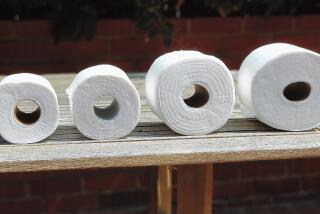Stumped on Stumpage
- Share via
Rep. Sam Gibbons (D-Fla.) has introduced legislation to redefine illegal or unfair timber pricing practices so that the increasing flow of Canadian forest products can be slowed. The result would be higher prices for American consumers and higher profits for American companies in the midst of the building boom as the tough Canadian competition was throttled.
The proposal is a bad one, all the worse because it is a form of protectionism that relies on changing the rules in the middle of the game. It would strike at Canada’s most important export, risking disruption of an open trade relationship across the common frontier that has substantially benefited both nations. It would almost certainly impose price increases on consumers of at least 10% to 15%. And it would ignore international treaty provisions that already provide a remedy for disputes through the General Agreement on Tariffs and Trade.
Issues of the dispute were submitted to the Department of Commerce in 1983, and the department rejected the assertion that Canada practiced unfair pricing. Now Congress is being asked to write new rules so that the way Canada sets the price on standing timber, called stumpage, will be found unfair and made subject to countervailing tariffs.
There is no dispute that Canada’s stumpage is much cheaper than U.S. stumpage. About 72% of U.S. stumpage is from privately owned forests, about 28% from government-owned lands. In Canada, most trees are owned by the provincial governments. The Canadian trees in general are more isolated, of lower quality, costlier to harvest. They are simply not worth as much as American stumpage. But Canadian provinces have encouraged increasing production nevertheless by pricing stumpage low, thus maintaining employment in areas, like British Columbia, with serious economic problems. American critics claim that the provincial governments lose money in the process.
The low stumpage in Canada is offset in part by relatively high wages. The result, according to the Canadians, is that the cost of the wood when it reaches the mill is about the same as that of wood in the United States at the mill. A spokesman for the Coalition for Fair Lumber Imports, the U.S. industry’s organization fighting to limit imports, said he cannot dispute this although he questions the figures. More than questioning is needed to prove allegations of subsidized prices.
The pricing of imports is so competitive that the Canadian share of the U.S. market has been increasing from 18.7% a decade ago to about 33% at present. In recent years, however, the rate of increase has slowed to about 1 percentage point a year. Last year, despite the growth in imports, American companies showed a marked increase in sales, almost equal to their


